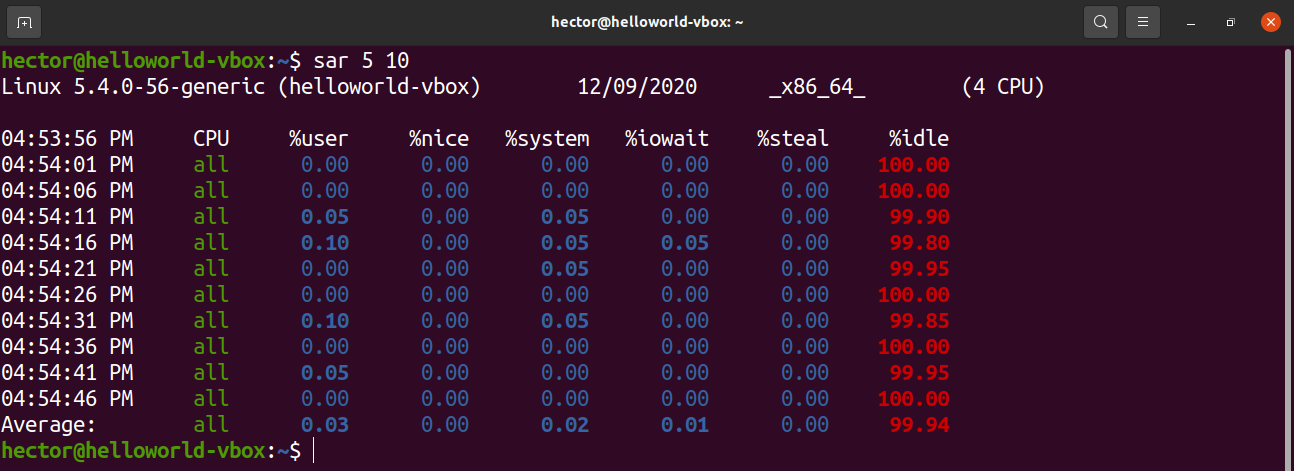

These numbers are already included in User and Nice. Guest and Guest Nice: The process (a hypervisor) is runningĪ virtual CPU.IRQ and SoftIRQ: The kernel is servicing interrupt requests (IRQs).Technically, when the runnable queue is emptyĪnd there are no I/O operations going on, the CPU usage is marked as idle.Īnd there are a couple of other types too, which you probably won’t see much of: Idle: And when there is really nothing the kernel can do, it just as to.“steal” cycles that are meant for your CPUs and give them to another, for Steal: When running in a virtualized environment, the hypervisor may.I/O Wait is when the CPU is waitingįor an I/O operation to complete, and the CPU can’t be used for anything else. Aįile server for example would nearly spend all it’s life waiting for disk I/O Wait: Sometimes the CPU has only one thing to do – wait for the.Nice is when the CPU is executing a user task having Report generation process at a lower priority and interactive processes at Nice: The user code can be executed in “normal” priority, or variousĭegrees of “below normal” priority.The categorization could stop here, but there a few more, to provide better It actually goes to sleep while the kernel performs that work, and wakes up Note that if an application tries to read from disk or write to network, User: The CPU is running code in user-mode.


In Linux, the hyperthread is the most granular, Physical processors in a machine, each with multiple cores, and each core with In this context, a single CPU refers to a single (possibly CPU Usage is a picture of how the processors in your machine (real or virtual)


 0 kommentar(er)
0 kommentar(er)
